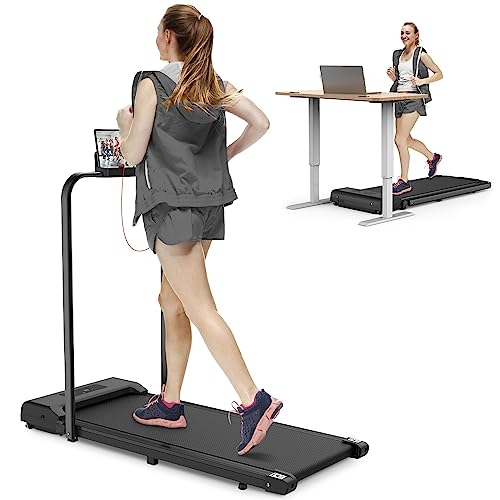What's The Current Job Market For Tread Mill Professionals Like?

본문

Treadmills: A Comprehensive Guide to Understanding Their Functionality, Benefits, and Appropriate Selection
Intro
Treadmills have actually become a staple in contemporary physical fitness routines, both in homes and health clubs worldwide. They use a convenient and efficient way to preserve cardiovascular health, increase endurance, and assist in weight management. This post checks out the different types of treadmills, their advantages, functions to think about when acquiring, and some FAQs to guide users in making notified decisions.

Kinds of Treadmills
When it comes to choosing a treadmill, it is essential to understand the different types readily available in the market. Here are the main classifications:
1. Manual Treadmills
- System: These treadmills have a basic style and depend on the user's efforts to move the belt.
- Pros: More cost effective, quieter operation, no electrical power needed.
- Cons: Limited functions, might not offer the exact same series of workout intensity.
2. Motorized Treadmills
- Mechanism: Powered by a motor that drives the belt, allowing users to walk or run at a set speed.
- Pros: Greater range of speeds and inclines, equipped with numerous features such as heart rate displays and Tread Mill exercise programs.
- Cons: More expensive and may need more maintenance.
3. Folding Treadmills
- Mechanism: Designed for those with minimal area, these treadmills can be folded for easy storage.
- Pros: Space-saving, often motorized, versatile functions.
- Cons: May be less durable than non-folding designs.
4. Business Treadmills
- System: High-quality machines designed for use in health clubs and physical fitness centers.
- Pros: Built to withstand heavy use, advanced functions, frequently include service warranties.
- Cons: Pricey and not perfect for home use due to size.
5. Curved Treadmills
- System: A distinct design that allows users to propel the belt utilizing their own energy.
- Pros: Offers a more natural running experience, promotes better running kind.
- Cons: More costly and can be noisier.
| Treadmill Type | Pros | Cons |
|---|---|---|
| Handbook | Inexpensive, no electrical power needed | Restricted functions |
| Motorized | Range of speeds, advanced features | Maintenance needed |
| Folding | Space-saving, typically motorized | May lack resilience |
| Industrial | Developed to last, professional-grade functions | Costly |
| Curved | Natural running experience, promotes excellent form | Higher rate |
Benefits of Using Treadmills
Treadmills use numerous benefits that can add to one's overall health and wellness goals. Some of these advantages include:
- Convenient Workouts: Treadmills enable users to work out inside no matter weather conditions.
- Cardiovascular Health: Regular use can improve heart health by increasing endurance and promoting healthy circulation.
- Weight Management: Effective for burning calories, which helps in weight loss and management.
- Adjustable Workouts: Users can control speed, incline, and period to develop personalized workout experiences.
- Security: Treadmills supply a foreseeable surface area, minimizing the threat of falls compared to outside running.
- Multifunctional: Many treadmills come with functions like heart rate monitors, exercise programs, and even entertainment systems.
Choosing the Right Treadmill
When choosing a treadmill, potential purchasers should think about numerous essential aspects:
Features to Consider:
- Motor Power: Typically measured in horse power (HP), a motor strength of at least 2.5 HP is recommended for severe runners.
- Belt Size: A longer and larger belt accommodates various stride lengths, offering comfort throughout exercises.
- Slope Settings: Adjustable slope features simulate outdoor hill running and can increase exercise strength.
- Weight Capacity: Ensure the treadmill can support the user's weight for security and longevity.
- Console Features: Look for easy to use dashboards, exercise programs, and Bluetooth compatibility for streaming music or other functions.
Budget plan Considerations
- Under ₤ 500: Entry-level manual treadmills appropriate for casual walkers.
- ₤ 500 - ₤ 1,500: Mid-range motorized treadmills that use more functions and much better resilience.
- ₤ 1,500 - ₤ 3,000: High-end designs with advanced innovation, larger motors, and longer guarantees.
- Over ₤ 3,000: Commercial-grade treadmills perfect for frequent use in gyms or training centers.
Frequently Asked Questions (FAQs)
1. How often should I utilize a treadmill?
It is advised to use a treadmill at least 3 to 5 times a week, including different strength levels for best outcomes.
2. Can I reduce weight by using a treadmill?
Yes, constant use of a treadmill can contribute to weight-loss, particularly when integrated with a balanced diet plan and strength training.
3. What is the very best speed to stroll on a treadmill for novices?
A speed of 3 to 4 miles per hour is an appropriate range for newbies. It's necessary to begin slow and slowly increase speed as comfort and stamina improve.
4. Do I require to utilize a treadmill if I currently run outdoors?
Utilizing a treadmill can provide extra benefits, such as controlled environments and varied workouts (slope, intervals) that are not always possible outdoors.
5. How do I preserve my treadmill?
Regular maintenance includes lubing the belt, cleaning up the deck and console, and checking the motor for optimum performance.
Treadmills are essential tools for those aiming to improve their fitness levels in a regulated and hassle-free manner. With numerous types offered, comprehending their functions and benefits is crucial for making a notified purchase. By thinking about individual exercise needs, space availability, and budget restrictions, people can find the most suitable treadmill that fits their way of life. Integrating treadmill workouts into a well balanced physical fitness routine can result in enhanced health results and a satisfying workout experience.

댓글목록0
댓글 포인트 안내